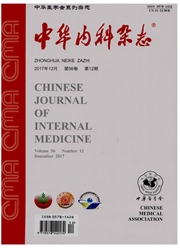

 中文摘要:
中文摘要:
目的探讨DNA结合抑制因子4(Id4)基因甲基化与急性白血病(AL)的关系。方法采用甲基化特异性(MS)-PCR对正常人骨髓、外周血、外周血干细胞(PBSC),以及AL细胞系和AL患者的骨髓进行Id4基因启动子区甲基化状况分析。结果Id4基因在正常骨髓、外周血和PBSC中呈完全性非甲基化状态。25例初治急性髓系白血病中有21例Id4基因甲基化,甲基化比例84%。14例初治急性淋巴细胞白血病中有12例Id4基因甲基化,甲基化比例达86%。8例复发和难治的AL患者该基因均呈甲基化。在K562和HL60细胞系中均呈完全甲基化,在Hek937细胞系则呈完全非甲基化。结论与正常人不同,在AL患者及白血病细胞系中,Id4基因启动子区都发生了高程度的甲基化改变,Id4基因甲基化模式的改变与AL的发生密切相关。
 英文摘要:
英文摘要:
Objective To investigate the relationship between promoter methylation of inhibitor of DNA binding 4 (Id4) gene and acute leukemia. Methods We detected the status of promoter methylafion of Id4 gene in peripheral blood, peripheral blood stem cell transplantation (PBSC) and bone marrow samples from health donors, bone marrow cells from leukemia patients and leukemia cell lines with MS-PCR methods. Results The frequency of Id4 promoter methylation was 21/25 in acute myeloid leukemia (84%), 12/14 in acute lymphoblastic leukemia (86%), 8/8 in relapse acute leukemias and 2/2 in leukemia cell lines whereas no methylation was detected in peripheral blood, PBSC and bone marrow samples from healthy donors. In addition, Hek937 cell line was unmethylated. Conclusion Id4 promoter methylation was detected only in acute leukemia patients and leukemia cell lines and it might play a role in leukemia genesis.
 同期刊论文项目
同期刊论文项目
 同项目期刊论文
同项目期刊论文
 期刊信息
期刊信息
